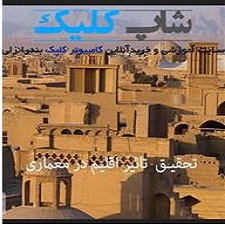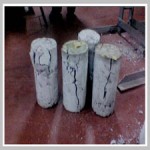توضیحات
ABSTRACT
Tehran is the biggest city between Istanbul and Mumbai, a city of 13 million in the desert. Like all other cities in Iran it was positioned strategically at the foot of a mountain in order to source water. But all this is forgotten today, and the urban sprawl has come to erase the memory of the underground water irrigation network: the qanat. It isn’t surprising that this organic water infrastructure was disregarded in the sixties when models of western modernization were pasted for the growth of Central-Asia’s capital. But today’s numbers are shocking: over six hundred abandoned underground galleries flush two hundred million cubic liters of wasted water annually.
INTRODUCTION
HydroCity, an international research lab at the intersection of art, ecology and the city recently led a workshop on Tehran’s qanats at the University of Tehran, School of Architecure. HydroCity has a mandate to offer visionary proposals for real time challenges. The workshop was in partnership with Paris’s Ecole Spéciale d’Architecture, through French philosopher Chris Younès’s Sustainable Development Project for Cities program. The question wasn’t how to re-vive Tehran’s qanats in their traditional form, but to imagine what place this infrastructure can play in a contemporary context. Iran is a desert but with mountains, a condition that allowed the Iranian civilization to invent the qanat, an ancestral underground irrigation infrastructure that led to the invention of the garden and by extension the city. The qanat directs water from the underground aquifers deposited at the foothill of a mountain by infiltration of melted snow. Seventy percent of all cities in Iran are thus by a mountain. Imitating the movements of water on soil, an underground gallery is dug directly in the bedrock, with a well every twenty or so meter. So the qanat is basically an invisible line punctuated by dots. Relying purely on gravity, the natural slope of the ground is used to distribute fresh water to lower sources. When it makes surface, the water is generally distributed in the city through a network of open-air canals.
چکیده
تهران بزرگترین شهر بین استانبول و بمبئی است که 13 میلیون آن در صحرا زندگی می کند. همانند سایر شهرهای ایران، به طور استراتژیک در پای کوه قرار داشت تا منابع آب به دست آید. اما همه اینها امروز فراموش شده است و ترویج شهری برای از بین بردن حافظه شبکه آبیاری زیرزمینی به وجود آمده است: قنات. تعجب آور نیست که این زیرساخت های آبی آب در دهه شصت نادیده گرفته شد، زمانی که مدل های مدرنیزه شدن غرب برای رشد سرمایه آسیای مرکزی جا به جا شدند. اما اعداد امروز تکان دهنده است: بیش از شصت سال گالری های زیرزمینی رها شده دو میلیون لیتر آب معدنی هدر میرود.
مقدمه
HydroCity، یک آزمایشگاه تحقیقاتی بین المللی در تقاطع هنر، محیط زیست و شهر اخیرا، یک کارگاه آموزشی در مورد قنات تهران در دانشکده معماری دانشگاه تهران را رهبری کرد. HydroCity دارای مجوز پیشنهادات چشم انداز برای چالش های زمان واقعی است. این کارگاه با همکاری “Ecole Spéciale d’Architecture” در پاریس، از طریق برنامه توسعه پایدار توسعه شهرها برای فیلسوف فرانسوی کریس یونس بود. سؤال این بود که چطور قاعدهای تهران را به شکل سنتی خود بازنمایی می کنیم، اما تصور می کنیم که این زیرساخت بتواند در یک زمینه معاصر بازی کند. ایران کویر است اما با کوه ها، شرایطی است که به تمدن ایرانی اجازه داده شد تا قنات، زیرساخت های زیرزمینی آبیاری اجدادی، که منجر به اختراع باغ و گسترش شهر شد، را به ارمغان آورد. قنات آب را از آبخوانهای زیرزمینی هدایت می کند که به وسیله نفوذ برف ذوب شده در قله کوه قرار دارد. هفتاد درصد تمام شهرها در ایران به وسیله یک کوه انجام می شود. با حرکت دادن آب در خاک، تقسیم یک گالری زیرزمینی به طور مستقیم در سنگ بستر استخراج می شود، و هر بیست یا چند متر به خوبی حفاری می شود. بنابراین قنات اساسا یک خط نامرئی با نقاط نقطه است. به تکیه بر گرانش، شیب طبیعی زمین برای توزیع آب شیرین به منابع پایین تر استفاده می شود. هنگامی که سطح را تشکیل می دهد، آب به طور کلی در شهر از طریق یک شبکه کانال های هوای آزاد توزیع می شود.
Year: 2012
Publisher : ELSEVIER
By : Sara Kamalvand
File Information: English Language/ 6 Page / size: 786 KB
Only site members can download free of charge after registering and adding to the cart
سال : 1391
ناشر : ELSEVIER
کاری از : سارا کمالوند
اطلاعات فایل : زبان انگلیسی / 6 صفحه / حجم : KB 786


![MesoCity Tehran Workshop Art, Ecology and the City[taliem.ir]](https://taliem.ir/wp-content/uploads/MesoCity-Tehran-Workshop-Art-Ecology-and-the-Citytaliem.ir_.jpg)

![Simulation study of damage detection in steel shear[taliem.ir]](https://taliem.ir/wp-content/uploads/Simulation-study-of-damage-detection-in-steel-sheartaliem.ir_.jpg)

![Embassy Tale of Two Cultures[taliem.ir]](https://taliem.ir/wp-content/uploads/Embassy-Tale-of-Two-Culturestaliem.ir_.jpg)


![Simulation study of damage detection in steel shear[taliem.ir]](https://taliem.ir/wp-content/uploads/Simulation-study-of-damage-detection-in-steel-sheartaliem.ir_-150x150.jpg)
نقد و بررسیها
هنوز بررسیای ثبت نشده است.